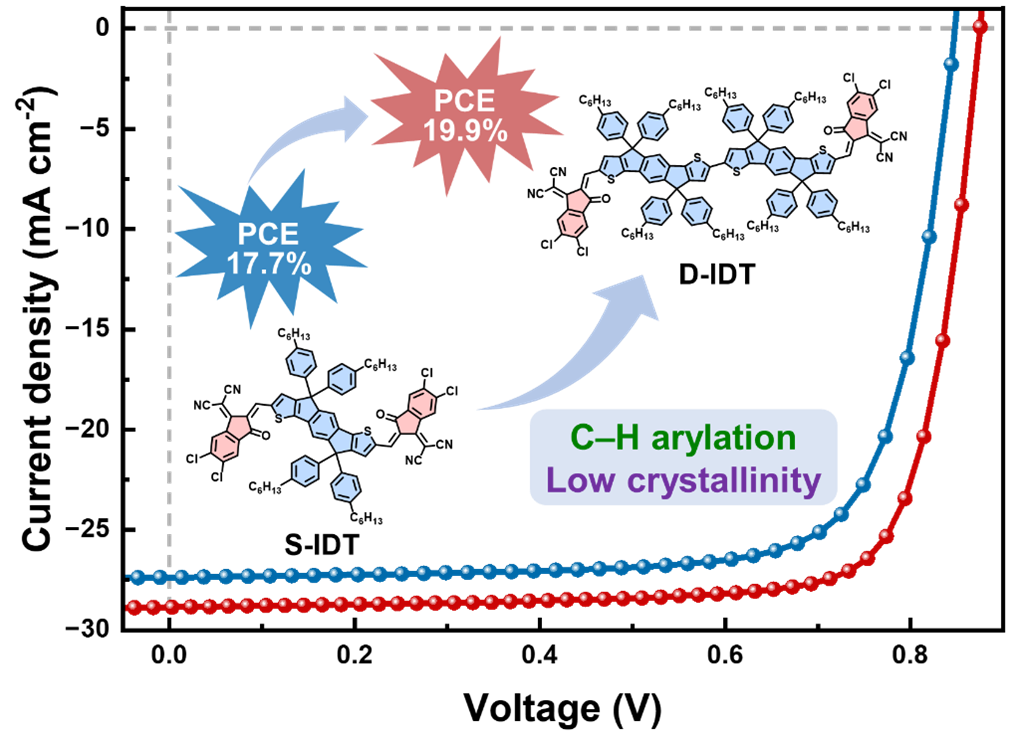2025-03-20 中国科学院(CAS)
 Fig. The D-IDT-treated ternary OSCs with a record high PCE (Image by NIMTE)
Fig. The D-IDT-treated ternary OSCs with a record high PCE (Image by NIMTE)
<関連情報>
- https://english.cas.cn/newsroom/research_news/tech/202503/t20250320_908435.shtml
- https://pubs.rsc.org/en/Content/ArticleLanding/2025/EE/D5EE00542F
高効率有機太陽電池のための直接C-Hアリール化由来の低結晶性ゲストアクセプター Direct C-H arylation-derived low crystallinity guest acceptor for high efficiency organic solar cells
Pengfei Ding, Xugang Rong, Daobin Yang, Xueliang Yu, Zhenxin Shao, Hongqian Wang, Xiaochun Liao, Xinyue Cao, Jie Wu, Lin Xie, Jintao Zhu, Fei Chen, Guo Chen, Yan Huang and Ziyi Ge
Energy & Environmental Science Published:19 Mar 2025
DOI:https://doi.org/10.1039/D5EE00542F
Abstract
The majority of host/guest materials used in organic solar cells (OSCs) are currently synthesized via Stille reaction, which suffers from poor atom/step economics, low cost-effectiveness, and environmental risks. Therefore, organic photovoltaic materials synthesized through low-cost and green methods are highly required. Here, an A-D-D-A type guest acceptor D-IDT was designed and synthesized by a tin-free direct C–H activation strategy and introduced into the classical D18:BTP-eC9 host system. Compared to the A-D-A type guest acceptor S-IDT, the D-IDT shows a greater π-conjugation but much weaker intermolecular interactions. Its low crystallinity results in good miscibility with the host acceptor BTP-eC9, which effectively promotes earlier assembly of BTP-eC9 and faster aggregation transition. This allows the formation of a smaller phase separation in the active layer, resulting in efficient exciton dissociation and charge transport. Moreover, the voltage loss of the OSCs device reduces by 18 mV when D-IDT is incorporated into the binary system. As a result, the efficiency of the D-IDT-controlled device is increased to 19.92% compared to the device with S-IDT (17.66%). This work provides valuable guidelines for the exploration of guest materials via the C–H activation reaction, while controlling the crystallization kinetics to fine-tune the assembly behavior of the host acceptor.



